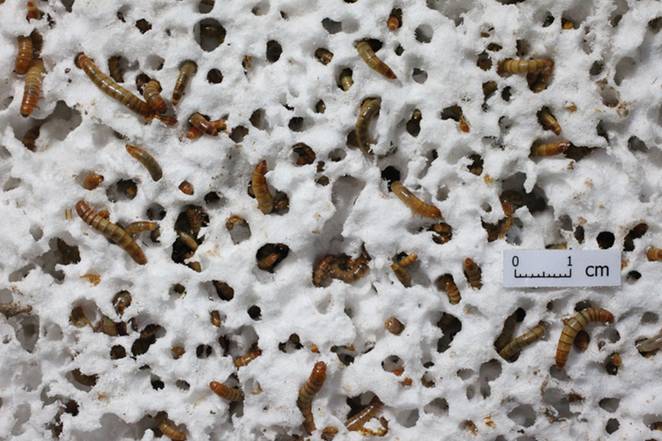Meet the Worms that Eat Plastic
This discovery is important because Styrofoam was thought to be non-biodegradable and presented a significant challenge for the environment.
Researchers believe they may have found a solution to the rising problem of plastic waste, NBC News reported. Research from Stanford shows that darkling beetle larvae, commonly called mealworms, will happily eat a diet of styrofoam, providing a possible method for disposing of this notoriously durable and pervasive plastic waste. Only a small fraction of that gets recycled-leaving the rest to litter the oceans, poison marine life, contaminate water supplies, and have other damaging effects on the environment. This could be very hopeful news in light of the amount of Styrofoam and other petroleum-based plastics we consume: Americans throw away 25 billion Styrofoam cups every year, and they will not decompose for thousands of years.
Researchers have learned that the mealworm can live on a diet of Styrofoam and other types of plastic.
The studies, published in the journal Environmental Science and Technology, provide the first-ever direct evidence of an animal’s gut containing bacteria capable of degrading plastic, the statement says.
“Our findings have opened a new door to solve the global plastic pollution problem”, Wei-Min Wu, co-author of the new study and senior research engineer at Stanford, said in a press release. The tiny worms then converted half of the plastic into carbon dioxide and excreted the remaining waste within 24 hours.
In the laboratory, the researchers observed 100 mealworms that were fed a diet exclusively of Styrofoam. Dr. Criddle is a professor of civil and environmental engineering who supervises plastics research by Wu and others at Stanford. Together, they plan to study whether microorganisms within mealworms and other insects can biodegrade plastics such as polypropylene (used in products ranging from textiles to automotive components), microbeads (tiny bits used as exfoliants) and bioplastics (derived from renewable biomass sources such as corn or biogas methane). The research will require scientists to look into the enzymes that break down polymers, in order to determine how to best degrade the plastics – and maybe guide manufacturers in designing polymers that break down more easily. “Sometimes, science surprises us”.
Criddle’s plastics research was originally inspired by a 2004 project to evaluate the feasibility of biodegradable building materials.








